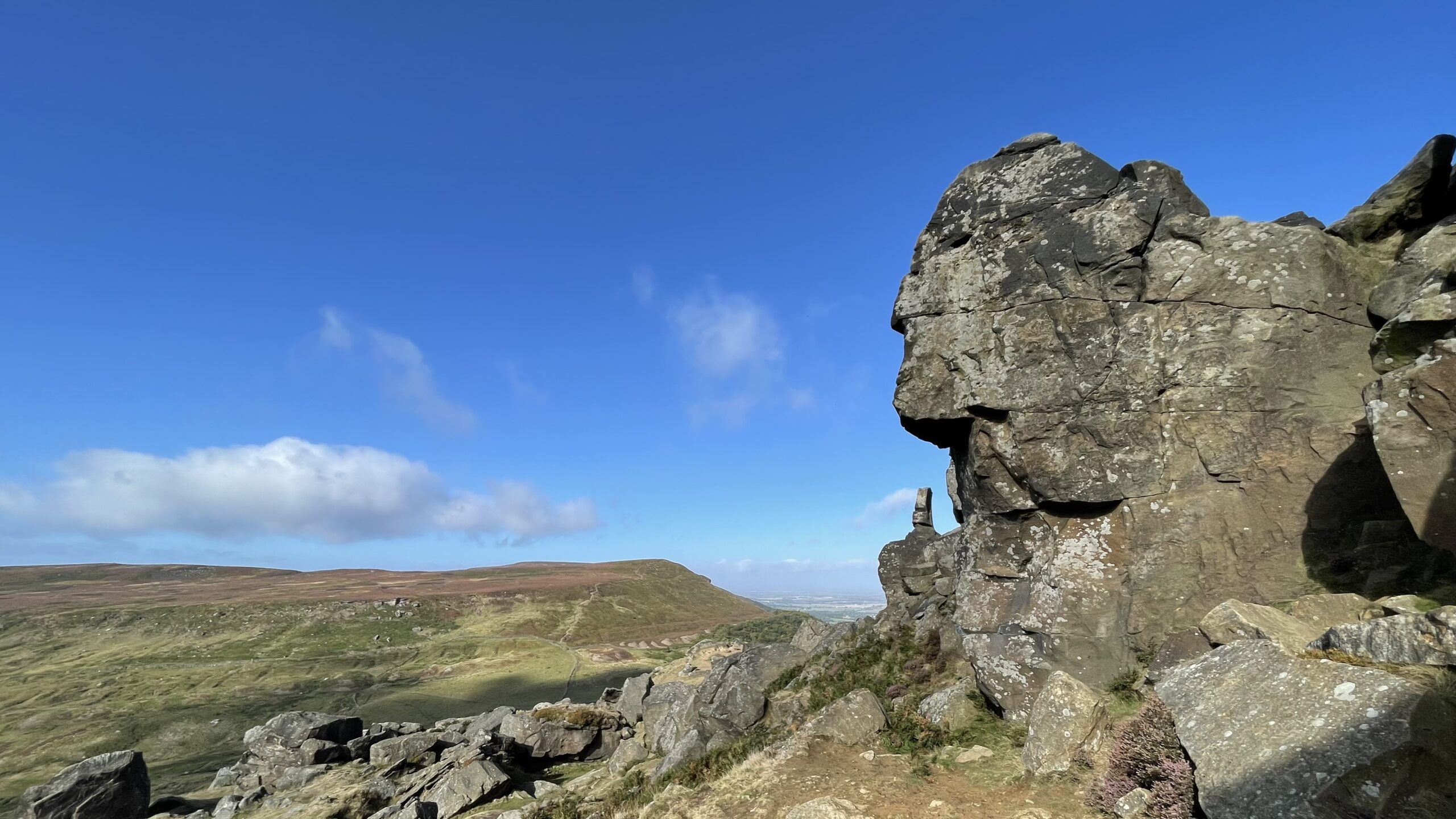They say the Great Sphinx of Giza was carved from a natural limestone outcrop, its form inspired by the imagined body of some animal, perhaps a lion, perhaps not. Such acts of pareidolia echo across cultures and centuries. As for the Sphinx at the Wainstones, I cannot say who named it first. Perhaps it was C. Fielding, who traversed the Sphinx’s nose in 19541Rock Climbs on the North York Moors. Page 62, Cleveland Mountaineering Club. 1985.. Whoever it was, I too see a face there, though nothing like the Great Sphinx. Perhaps it is its inscrutable smile, though my imagination does not stretch that far.
In 1971 the Yorkshire Post carried a story that the Wainstones were “being moved by hooligans.”2Wainstones target of hooligans. Yorkshire Post and Leeds Intelligencer – 06 May 1971. https://www.britishnewspaperarchive.co.uk/viewer/bl/0000687/19710506/157/0007 Albert Sanderson of Grange Farm, Great Broughton, declared that vandals were pushing the stones over and “knocking them to bits.” His language has the ring of exaggeration, the sort we are more used to seeing in today’s social media.
Sanderson said he had lived there since 1929: “After you’ve lived here all those years and seen those rocks every day you soon notice when any of them are moved. They are a landmark and you do not want to see them all knocked down into a pile of rubble.” He added that although some of the stones rocked slightly, anyone who toppled them “must have tried very hard because they would never have blown over in the wind.” What he did not consider were the natural geomorphic processes by which gravity and erosion steadily move the earth downslope.
He may also have forgotten that, just after the war, a major rockfall had already reshaped the site, creating fresh faces that the local climbing community quickly explored3Rock Climbs on the North York Moors. Page 62, Cleveland Mountaineering Club. 1985..
Of course, to bring in geomorphology, gravity, and the slow labour of erosion is to miss the point entirely. Such sober considerations would only flatten the tale, robbing it of its drama. Far better, it seems, to imagine hooligans of superhuman strength toppling megaliths by night than to accept that the earth itself is the real culprit. Science, after all, rarely makes for a good story.
- 1Rock Climbs on the North York Moors. Page 62, Cleveland Mountaineering Club. 1985.
- 2Wainstones target of hooligans. Yorkshire Post and Leeds Intelligencer – 06 May 1971. https://www.britishnewspaperarchive.co.uk/viewer/bl/0000687/19710506/157/0007
- 3Rock Climbs on the North York Moors. Page 62, Cleveland Mountaineering Club. 1985.

Leave a Reply